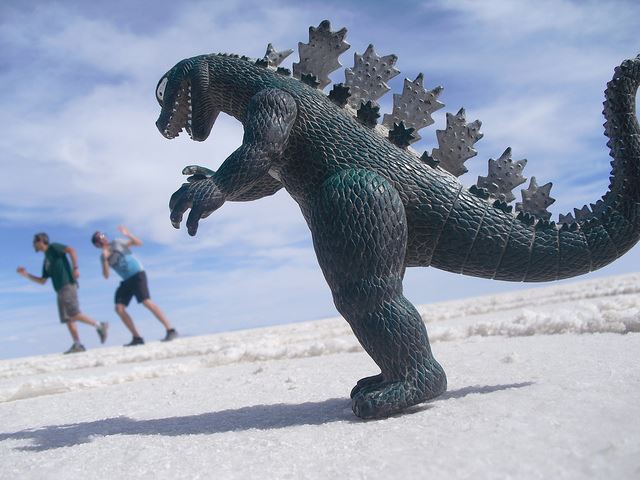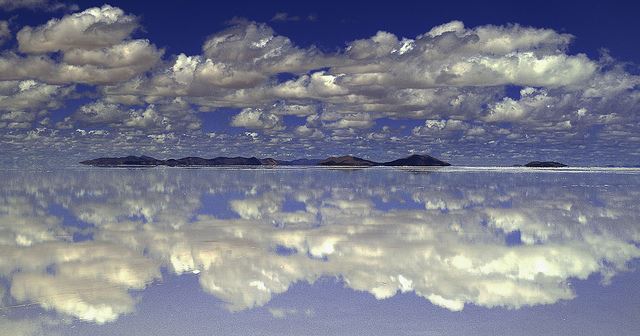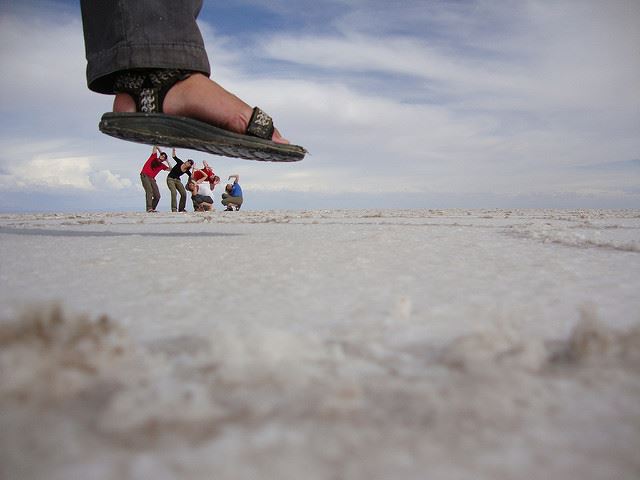When to visit Uyuni Salt Flats
The Salar de Uyuni in South-Western Bolivia is one of the trippiest places you’ll ever go. Deciding whether to visit in the wet or the dry season is your first challenge.
The Salar de Uyuni isn’t just the world’s biggest salt flat (4,086 sqm) it’s also the world’s highest (12 000 ft). And it’s almost certainly the weirdest place you’ll ever go. I get annoyed when tourist attractions are often described as ‘otherworldly’, but in Uyuni’s case this seems like one of the very few appropriate adjectives – lunar, hallucinogenic and ethereal being the others.

Add this to the fact that your accommodation options consist of a luxury airstream camper or a hotel constructed entirely out of salt, and you have all the ingredients for the adventure of a lifetime. Now that your mind’s made up, you have to decide when to go. The good news is Uyuni is a year-round destination. The bad news is that the dry and rainy seasons are so different you almost have to visit twice. (You wouldn’t be the first!)
Uyuni in the dry season: the world’s biggest blue screen
Uyuni is a high-altitude desert and it receives zero rainfall April thru September and only a smattering of drizzle in October and November. From June till at least November, the salt flats are rock hard and extremely easy to drive on. This means you’ll be able to get around with no hassles and will be assured of visiting the ‘islands’ (outcrops of cacti), caves and volcanoes that are included on our 4-day itinerary.

The dry season is also the best time to take hilarious, perspective-shifting photos as the pure white backdrop serves as Nature’s version of the blue screen. The lack of cloud cover means that both sunblock and warm clothing – especially in the chilliest months of June, July and August – are essential.
Uyuni in the wet season: the world’s biggest mirror
Uyuni receives less than 5 inches of rain per year, but the vast majority of this falls between December and April. Because the salt is so darned hard, this water has nowhere to go and by February or March, the salar becomes one giant knee-deep puddle.

All the water makes getting around a bit harder (we provide waterproof boots!), so come prepared for the fact that you may not be able to reach some parts of the salar, most notably Incahuasi ‘island’. The spectacular mirror-effect created by all that water more than makes up for any hardships – the rainy season is an extremely popular time to visit, so be sure to book well in advance. Uyuni’s sunrises and sunsets are always incredible, but in the wet season, they become truly otherworldly. That word again.
Best of both worlds?
For many visitors, the ideal scenario is to visit when there is enough water around to experience the mirror effect but not so much as to hamper your movement completely. Traditionally this meant visiting in April or May but changes in weather patterns (see below) make planning a bit trickier.

The times they are a changin’
This blog doesn’t seem the place to weigh in on the great climate change debate, but what we can say is that in recent years the rains have tended to come later than usual. In 2016, for example, the first rain fell in mid-February… Meaning that visitors in December and January didn’t get to see the mirror effect and visitors in June did.
We list three carefully thought-out Uyuni itineraries on our website, but we also can craft a bespoke adventure just for you. If you’re desperate to see the flats in one or other season, or if you’re keen to ‘have your cake and eat it’ we suggest putting one of our spiffy Destination Experts on the case. Of course, there can be no guarantees when it comes to the weather, but by liaising with people on the ground in the Uyuni we should be able to get you what you want.

Credit to Christopher Crouzet for the title image of this blog.